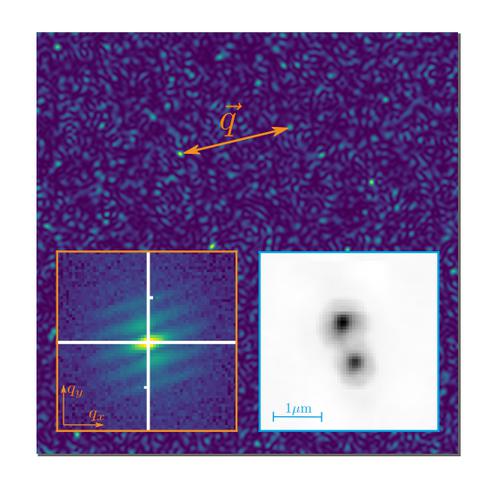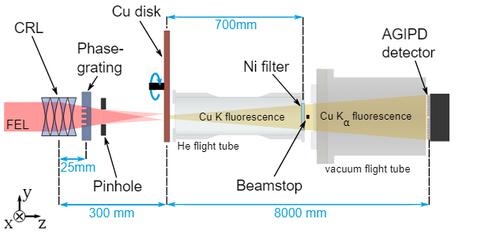XFEL: New imaging technique could shed light on individual molecules
New imaging technique could shed light on individual molecules
An international research team has succeeded for the first time in using X-rays for an imaging technique that exploits a particular quantum property of light. The research team, led by Henry Chapman, leading scientist at DESY and professor at Universität Hamburg, used very intense X-ray pulses from the European XFEL to generate fluorescence from copper atoms. By measuring two photons from the emitted fluorescence almost simultaneously, scientists can obtain images of the copper atoms. The research, published in Physical Review Letters, could enable imaging of individual large molecules.
The atomic structures of materials and large molecules such as proteins are usually determined using X-ray crystallography, which relies on “coherent” X-ray scattering. Undesirable incoherent processes like fluorescence emission, however, can dominate the measurements, adding a featureless fog or background to the measured data. In the 1950s, astronomers Robert Hanbury Brown and Richard Twiss coined a method called “intensity interferometry”, that can extract structural information through the ‘incoherent’ fog. The method exploits the quantum mechanical properties of light, and opened the door to new understanding of light.
Scientists from the University of Erlangen, the Max Planck Institute for the Structure and Dynamics of Matter and DESY proposed that intensity interferometry could be adapted for atomic-resolution imaging using X-ray fluorescence. The ultra-short, high intensity pulses of the European XFEL were used to generate fluorescence in copper. By measuring the emitted fluorescent photons as they arrive at the detector almost simultaneously, scientists can generate an image of the fluorescent atoms by what is called a “special correlation analysis”. The challenge in using this method with X-rays is that the photons “decohere”, becoming unsuitable for intensity interferometry. Now, the ultrashort and ultrabright European XFEL beam, combined with its megahertz repetition rate, makes this method applicable for the first time in imaging experiments at the European XFEL’s MID instrument.

“This approach has promise for a range of different experimental scenarios”, says Fabian Trost from DESY, who led the study. “In the future, it might be possible to obtain high-resolution three-dimensional images of fluorescing structures for real-time analyses, for instance of the formation and evolution of dense plasmas, which are relevant for fusion energy research.”
The scientists now hope to combine the novel method with diffraction to image single molecules, which may help unravel the functioning of important enzymes such as involved in photosynthesis.
Reference:
Imaging via Correlation of X-Ray Fluorescence Photons; Fabian Trost et. al.; „Physical Review Letters“, 2023; https://journals.aps.org/prl/abstract/10.1103/PhysRevLett.130.173201
See also the feature in APS Physics: https://physics.aps.org/articles/v16/66
Contact:
Dr Anders Madsen
Tel: +49-40-8998-5667
E-mail: anders.madsen@xfel.eu
Dr Bernd Ebeling
Tel: +49-40-8998-6921
E-mail: bernd.ebeling@xfel.eu

